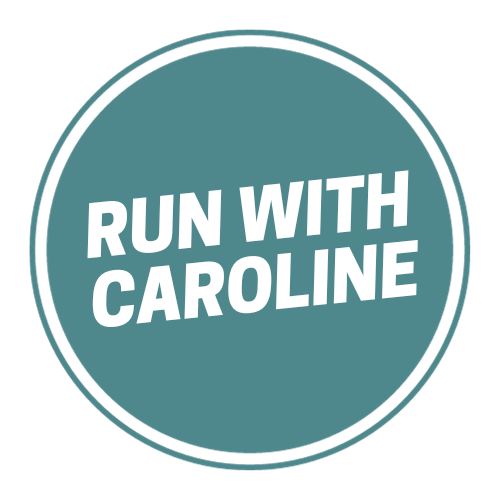A saggy butt is a problem for both men and women.
But it is more commonly a concern for women as they have a higher body fat percentage.
Your buttocks are made up mainly of your gluteal muscles.
Your glutes are the one of the largest and strongest muscles in your body, and play an important role to propel your forward when you walk and run.
Well-defined glutes give your butt a firm and toned appearance.
When you have weak glutes or less defined glutes, this can lead to your butt looking saggy.
So if one of your concerns is a saggy butt and it’s starting to affect your self-confidence, we’ll share some preventative tips in this guide.
We’ll look at:
- What is a saggy butt?
- What causes a saggy butt?
- What are the muscles in the butt?
- How to get rid of a saggy butt
- How long does it take to lift a saggy butt?
- How to fix a saggy butt: 7 scientifically proven exercises to lift your butt
Ready?
Let’s go!
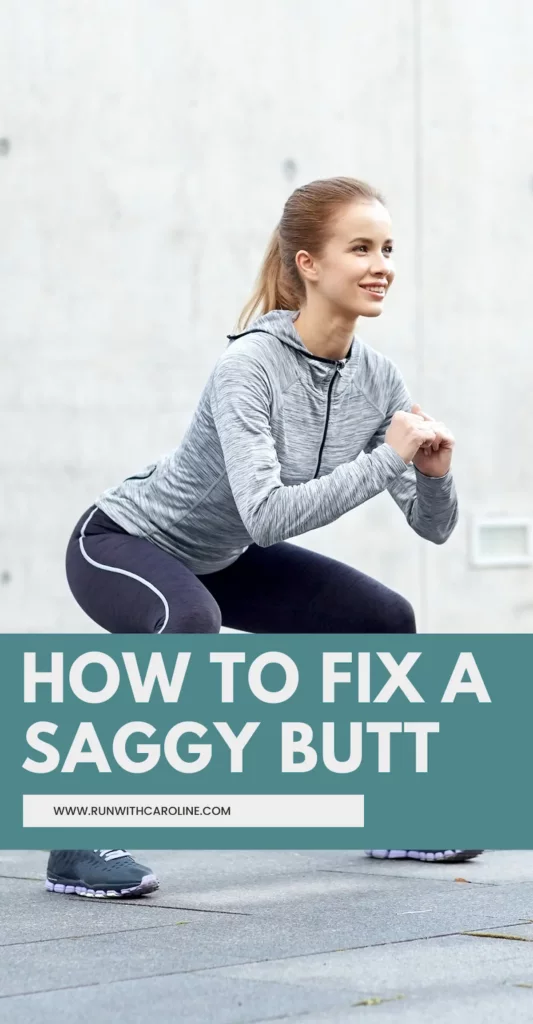
What is a saggy butt?
A saggy butt is when your buttocks lack definition and muscle tone in the large glute muscles.
This then leads to a flat or ‘saggy’ appearance in your behind.
Your glutes are the main muscles in your butt.
When strengthened properly, they give your butt that firm and taut appearance.
Saggy butt is also known as Disappearing Butt Syndrome (DBS for short).
As you get older, DBS is inevitable. An unfortunate side affect of ageing is muscle loss (muscle atrophy) – also known as sarcopenia.
It is thought the rate of sarcopenia is 1-2% per year after the age of 50.
One study concluded that up to 50% of muscle mass is lost when you reach your 80s.
Although you will lose muscle throughout your whole body, it is more noticeable in your hips, buttocks and shoulders.
These are the areas that add padding to your skeleton, and therefore add definition and shape and accentuate your frame.
Related: Does running make your butt bigger? 20 butt building exercises
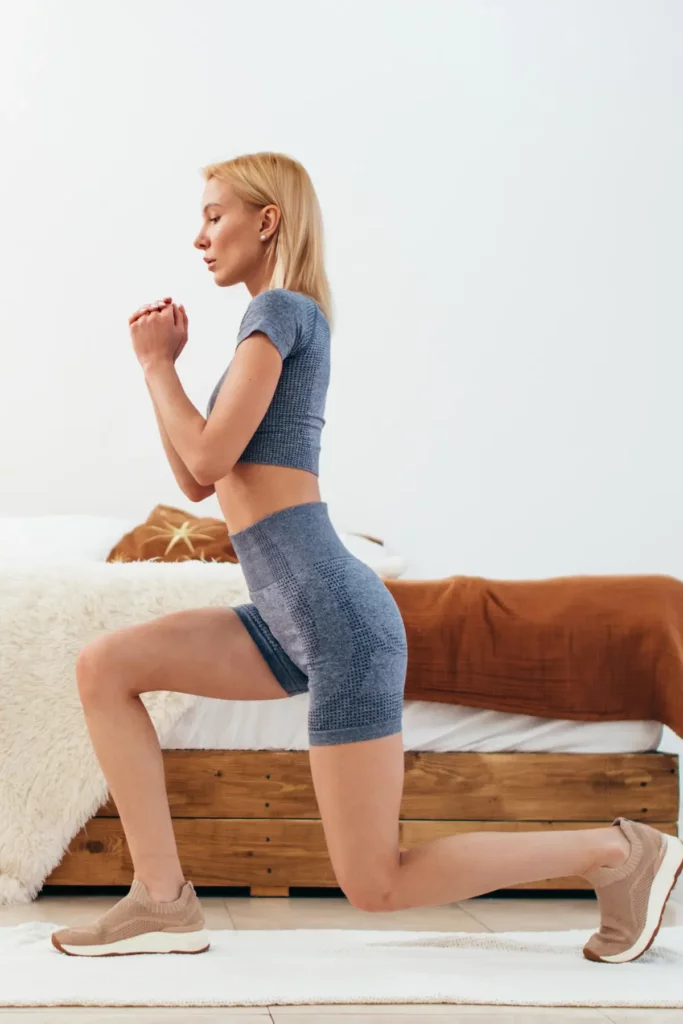
What causes a saggy butt?
A saggy butt is caused by a variety of factors:
#1 Ageing
The number one cause of a saggy butt is ageing.
As you get older, gravity takes its toll and the muscles in your butt (the glutes) naturally lose their strength, fitness and elasticity.
Much like the muscles in your face and other parts of your body, they gradually lose their toned appearance.
#2 Poor diet
Poor diet choices can cause a saggy butt.
Junk food, processed foods and refined carbohydrates – this list goes on.
These can all impact the amount of fat you store around your body, including in your butt.
#3 A sedentary lifestyle
If you lead a sedentary lifestyle, or you’re stuck behind a desk all day, then this can make a saggy butt worse.
When you spend long hours on the couch or sat at your desk, this can cause excess fat to build up in and around your buttocks.
This excess fat then causes your buttocks to sag.
#4 Lack of exercise
Similarly, if you don’t exercise regularly, or don’t exercise at all, this can cause lack of definition in your muscles, including those in your butt.
Exercise helps to shape and define your butt.
#5 Sudden weight loss
A saggy butt after weight loss happens when you lose weight dramatically.
Excess fat cells in the butt cause the skin to stretch.
When you lose weight, this can cause the appearance of excess skin around your butt.
This can be more of a concern when you age as your skin loses its fitness and elasticity.
#6 Genetics
As with most things, your genetics determine your body shape, bone structure and how easily it is for you to build and hold onto muscle.
Some people are blessed with a well-defined, firm derrière.
Whereas others, due to their genetics and bone structure, are more likely to have a flat butt.
Related: 7 of the best glute strength exercises for runners
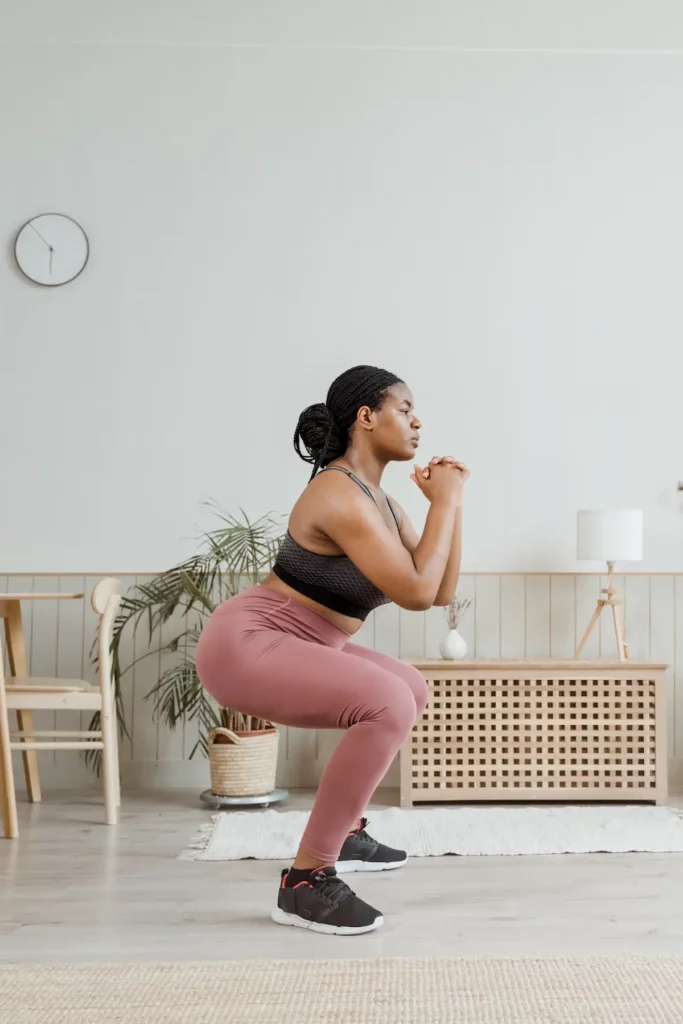
Related: Can you exercise after Botox? 9 do’s and don’ts for Botox aftercare
What are the muscles in the butt?
Your buttocks are made up of three gluteal muscles:
- Gluteus maximus
- Gluteus medius
- Gluteus minimus
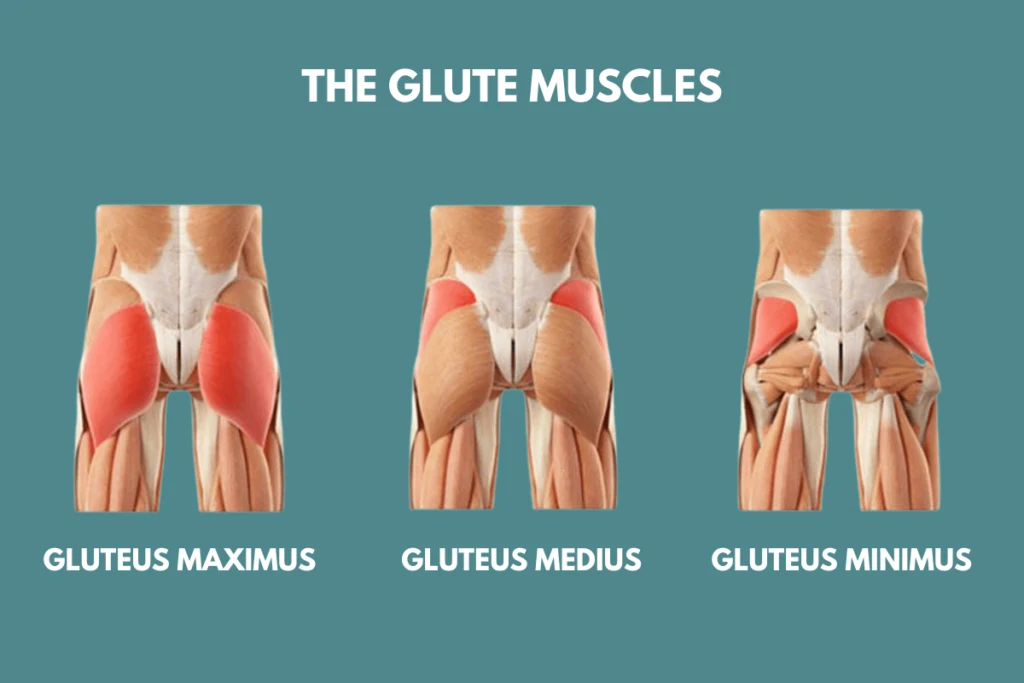
#1 Gluteus maximus
The gluteus maximus is the largest of the butt muscles.
It makes up a large part of the shape and appearance of the butt and hips.
Its two main functions are to:
- Extend and abduct the thigh at the hip joint.
- Assist with external rotation and adduction of the thigh.
#2 Gluteus medius
Found deep in the buttocks, the gluteus medius helps to abduct and internally rotate the thigh at the hip joint.
It also helps to stabilise the pelvis and trunk during walking and running.
#3 Gluteus minimus
The gluteus minimus is the smallest of the glute muscles.
It acts in synergy with the gluteus medius muscle to abduct and internally rotate the thigh.
It also contributes to pelvis stabilisation.
Related: 5 dynamic hip flexor stretches for runners + how to do them
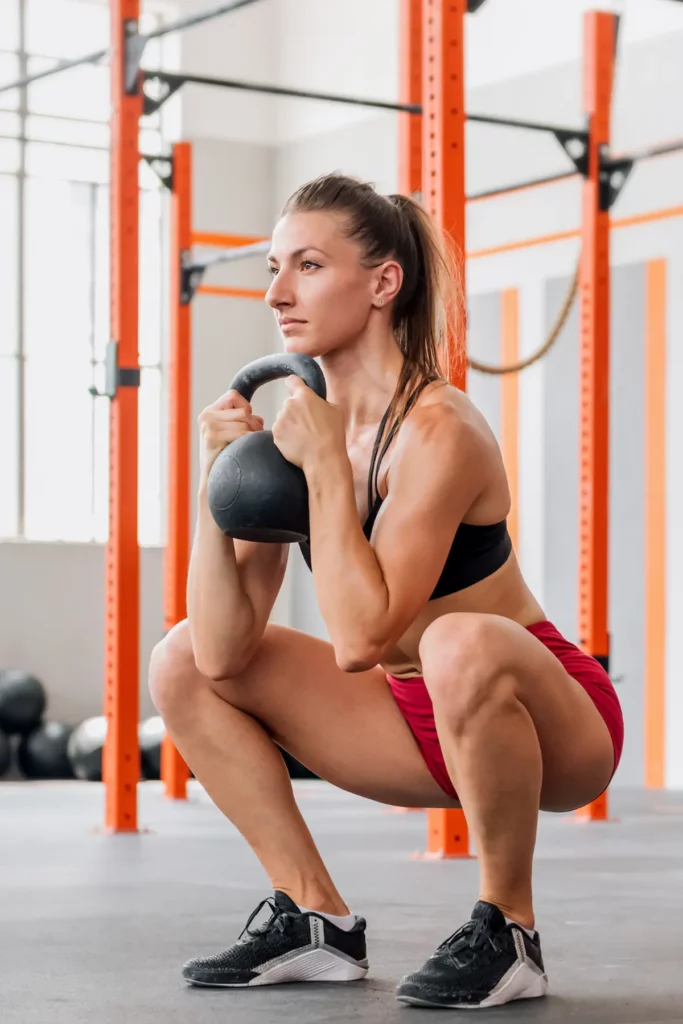
How to get rid of a saggy butt
Whilst there’s no quick fix, there are ways to prevent a saggy butt.
The four key things you can do to add definition to your derriere are:
- Lose weight
- Follow a healthy, balanced diet
- Strength train
- Be more active
Let’s take a look at these areas in more detail.
#1 Lose weight
Firm muscle = a firm butt.
A firm butt doesn’t sag.
If you’ve got a lot of excess fat in your butt, it will hang off the muscle causing it to sag.
So you will need to lose weight and get rid of any excess fat.
Aerobic exercise like running and cycling will help you lose weight and burn calories.
A good weight loss program will combine both low and high intensity exercise with a healthy, balanced diet – more on that next.
Related: Running for weight loss: The most effective running workouts
#2 Follow a healthy, balanced diet
Following a healthy, balanced diet will help you see long term results.
This means avoiding highly processed and sugary foods, foods high in calories and instead focusing on getting your daily dose of fruit, veggies, antioxidants, protein and healthy fats.
Protein especially is important for muscle growth and the repair of muscles after a workout.
Here are some foods that will help you enlarge your butt:
- Eggs
- Chicken
- Salmon
- Legumes
- Milk
- Avocados
- Seeds like flaxseed and pumpkin seeds
- Nut butter
- Greek yoghurt
- Tofu
- Quinoa
Related: Fat protein efficient vs. carbohydrate efficient, which is best for you?
#3 Strength train
As I mentioned earlier, a saggy butt is caused by loss of definition and tone in the buttocks.
So regular exercise in the form of strength training can help prevent a saggy butt.
Strength exercises are crucial to keep your butt firm and toned.
These will help to build muscle in your butt (your glutes) and keep it firm and toned.
When choosing exercises, it’s important you do strength exercises that are more likely to increase and grow your muscle cells (also known as muscular hypertrophy).
This can be achieved in one of two ways:
- Perform lots of repetitions (reps) at a lower weight.
- Lift a heavy weight for fewer reps.
The approach you take will depend on your fitness goals, but will essentially determine the way your muscles grow and change.
When you work out, if you want to tone or improve muscle definition, lifting weights is the most common way to increase muscular hypertrophy.
One 2010 study found that in order to achieve maximum gains, you need to be placing significant metabolic stress on the muscles, plus a moderate degree of muscle tension.
Adding that intensity (i.e. load) has been shown to have significant impact on muscle hypertrophy and is arguably the most important exercise variable for stimulating muscle growth.
So next time you do a workout, increase the intensity of the workout by adding more load.
This doesn’t mean exhausting your body every time you do a workout.
Small changes like increasing the load each time you do a workout and alternating between loads are good ways to approach it, especially if you’re new to lifting weights.
Just make sure you are comfortable lifting the weight and you’re not putting yourself at risk by doing so.
If you’re thinking of sticking with bodyweight exercises, whilst this is fine, it will take longer to see results.
At the end of this guide you will find some butt building exercises that are scientifically proven to lift your butt.
Related: The ultimate 14 day strength training plan for runners
#4 Be more active
Along with strength training, staying active is important when preventing a saggy butt.
As I mentioned earlier, leading a sedentary lifestyle can cause a lack of definition in your butt muscles.
By being more active and combining this with strength training, you will go a long way to shape and define your butt.
Related: The ultimate 30 day strength training plan for runners
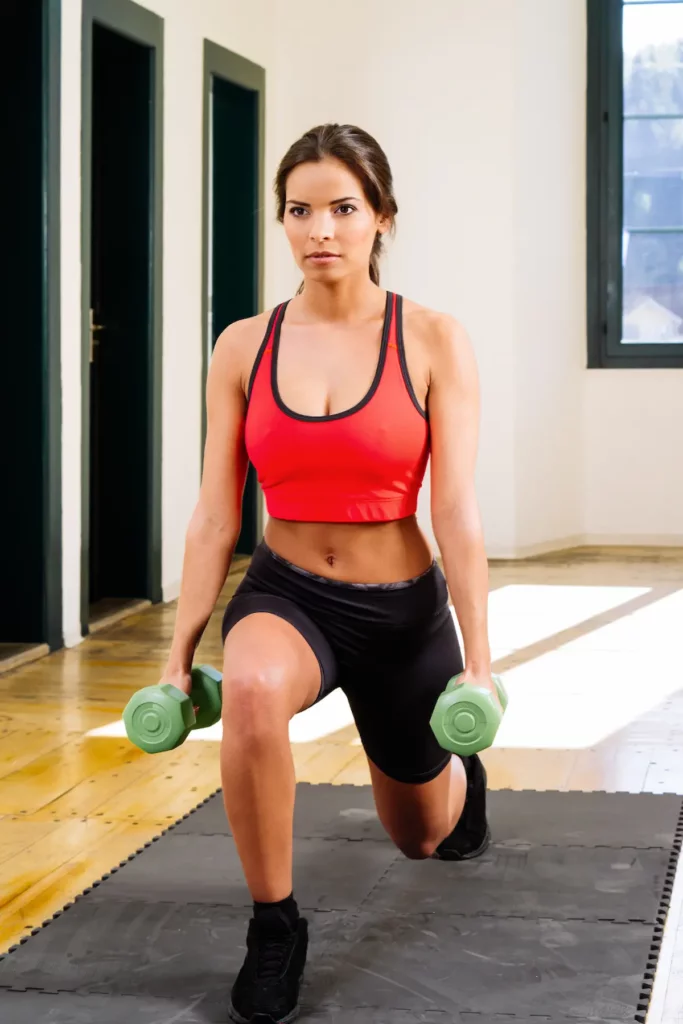
How long does it take to lift a saggy butt?
It is recommended you work out between 3 to 4 times a week to see real changes.
In these workouts you will need to focus on your legs and lower body, or alternate between upper and lower body if you want some variety.
For example, a typical workout schedule could look like this:
- Lift 2 to 3 days a week and focus on lifting heavy (whatever that looks like for you) in each of these sessions.
- Use the other days in your schedule rest and active recovery exercises.
If you stick to a consistent routine, and combine this with a good diet, you can expect to see results within 5 to 6 weeks.
Related: Synthetic vs. natural moisture wicking underwear: What is best for running?
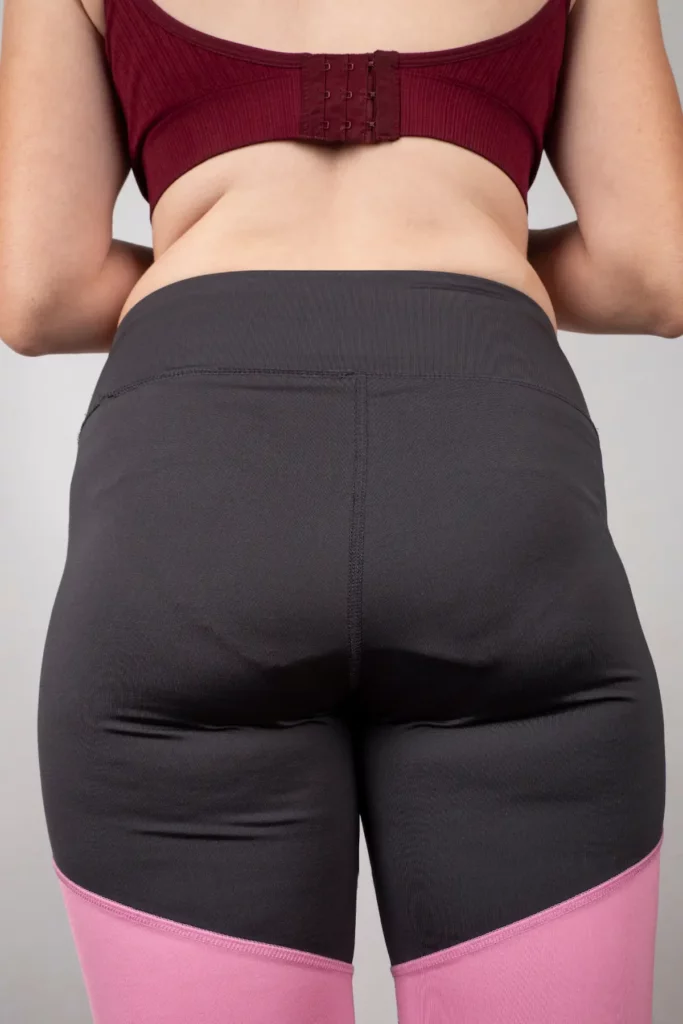
How to fix a saggy butt: 7 exercises scientifically proven to lift your butt
Now you know more about what causes a saggy butt, here are 7 exercises to lift your butt.
These exercises are scientifically proven to lift your butt.
A 2020 study that looked at glute activation during strength and hypertrophy exercises found that these exercises have high levels of glute activation.
Hypertrophy = an increase and growth in muscle cells.
#1 Squat
- Stand up and put your feet shoulder width apart and toes pointed ahead. Your knees should not go past your toes.
- Squat down – your hips should move down and back. Maintain a curve in your back and keep your heels flat on the floor the entire time.
- Keep going down until your hips descend lower than your knees.
- Hold for a few seconds then push back up through your heels.
#2 Bulgarian split squat
- Stand roughly two feet in front of a bench or chair with your feet hip-width distance apart.
- Lift your right foot and put it on the bench/chair behind you.
- Squat down by bending your left knee, allowing your right knee and ankle to naturally bend as you do so.
- Lower down until your quads are parallel with the ground.
- Push back up through your left knee, using your quad and glute to power you back up.
#3 Weighted hip thrust
- Place your back on an exercise ball or bench and your glutes on the floor.
- Place one weight horizontally across the hips. You can also place one weight on each hip.
- Perform a hip thrust by squeezing the glutes and pressing the dumbbell straight up until the hips align with the shoulders and knees.
- Squeeze at the top before lowering down to repeat.
#4 Donkey kickback
- Get on all fours with your knees hip-width apart, with your hands under your shoulders. Keep your neck and spine neutral.
- Engage your core and lift your right leg, knee staying bent, foot staying flat and hinging at the hip.
- Use your glute to press your foot directly towards the ceiling and squeeze at the top. Ensure your pelvis and working hip stay pointed towards the ground.
#5 Lunge
- Stand up straight with your feet shoulder-width apart then step forward with your right leg, placing your weight into your heel.
- Bend your right knee, lowering down so that it’s parallel to the floor in a lunge position.
- Without moving your right leg, move your left foot forward, repeating the same movement on your left leg. Pause as your left leg is parallel to the floor in a lunge position.
- Repeat this movement, “walking” forward as you lunge, alternating legs, if you wish.
#6 Step up
- Stand in front of a step or platform holding your weights.
- Place your right foot on the step.
- Press through your heel, step up onto the step, then bring the left foot next to the right.
- Briefly touch the left toes on the step and then step down, keeping the right foot on the step.
- Repeat for 8 to 16 reps and switch sides.
#7 Barbell hip thrust
- Place the loaded bar in your hip crease.
- Stabilise your upper back on the bench.
- Press through your heels and lift your hips.
Related: 9 best core exercises for runners + 4 core workouts to try
- 5 things I wish I’d known before returning to running - March 3, 2024
- Running 20 minutes a day: Benefits + how to start - January 27, 2024
- How to run your first 2 hour half marathon - January 16, 2024
